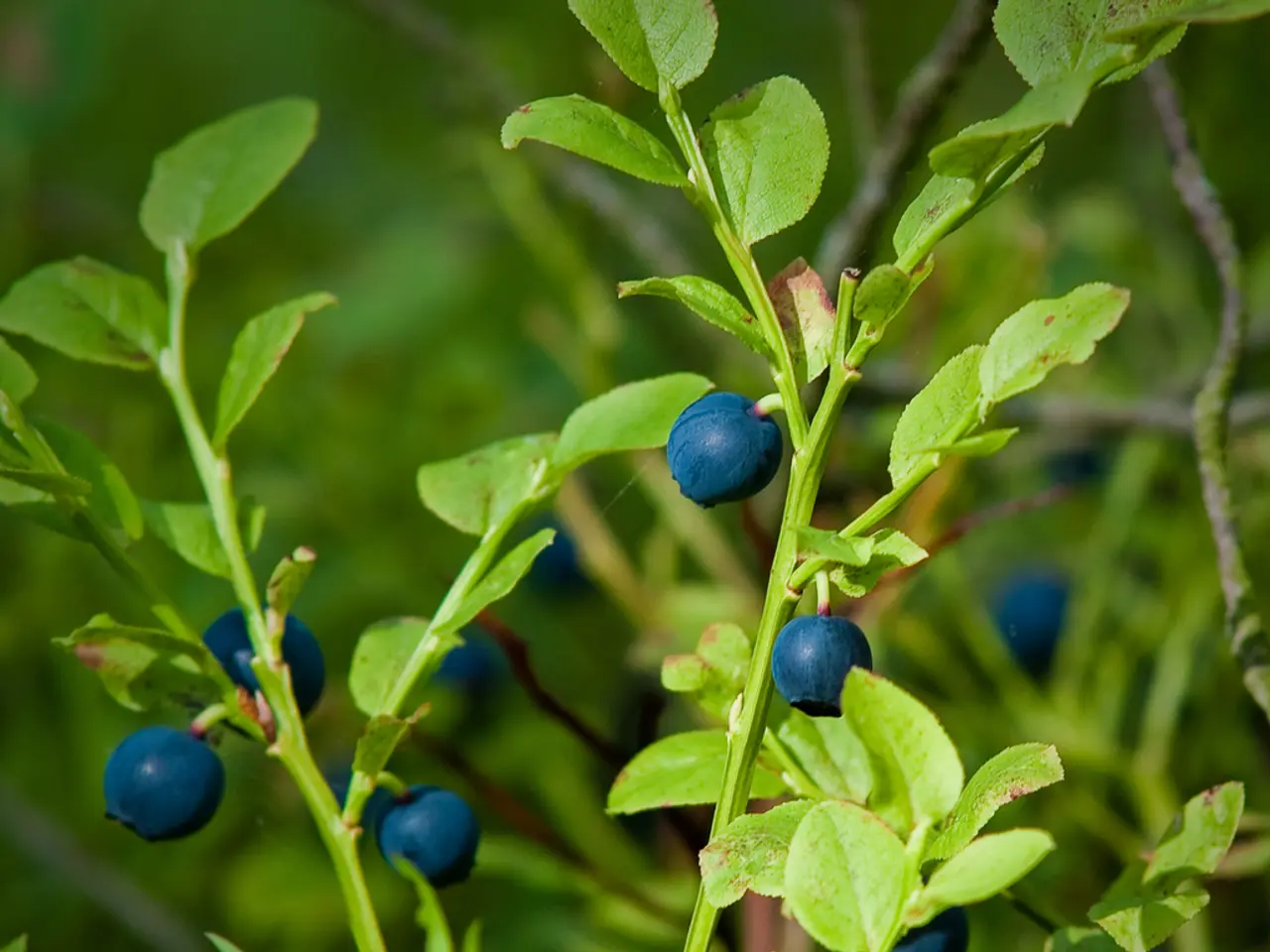Cultivating Aronia Berries: A guide to a lesser-known, effortless bush yielding nutritious summer fruits
In the realm of gardening, a hidden gem is making its way into colder climates: Aronia berries (Aronia melanocarpa). Native to eastern North America, these cold-hardy fruit bushes thrive in US hardiness zones 3 to 9, and can even be grown as low as zone 2 with the hardy Honeyberry plants.
Aronia berries, often referred to as chokeberries, are not to be confused with chokecherries (Prunus virginiana). The Aronia berry plant grows as a deciduous shrub, reaching heights of 1–2.5 meters, with groundcover varieties being shorter. It boasts creamy white flowers in spring, vibrant green foliage that turns red in autumn, and ink-black berries that ripen from late summer into fall.
These nutritious fruits are rich in antioxidants, polyphenols, and vitamins, making them a great addition to any garden. However, they have a strong, tart flavour and are best enjoyed in cooked dishes, jams, jellies, and juices. It is worth noting that while the berries are not toxic to humans or animals, consuming them in large quantities may cause mild stomach upset due to their tartness.
To cultivate Aronia berries, they prefer full sun to part shade, with 6 to 8 hours of light daily. They are adaptable to a variety of soil types, but thrive best in fertile, well-draining soils. In hotter climates, some afternoon shade can protect the plants and improve yield.
Aronia berries are cold-hardy, surviving temperatures down to –35°C, making them adaptable to a wide range of climates. They require moderate water, tolerating typical garden moisture levels, but avoiding waterlogged conditions for optimal growth.
The plants are self-fertile but produce better and more consistent crops with cross-pollination, so planting multiple shrubs may enhance yields. Aronia seeds require cold stratification for 3–4 months at 1–5°C to break dormancy, followed by warmth (18–22°C) for germination, with slow and staggered sprouting.
When planting, give each bush at least five to eight feet of space. Regular pruning keeps bushes at a manageable size and ensures they are highly productive and full of a good mix of ages of wood. Aronia berries fruit on older wood, reaching peak productivity on three-year-old wood.
Annual feeding with compost, well-rotted manure, or an organic, slow-release, balanced fertilizer in the spring is beneficial to keep the soil fertile. Mulching around plants annually is recommended to retain moisture in the soil, suppress weeds, and provide nutrients as the material breaks down.
Harvesting Aronia berries is advisable from late summer into fall, with the first fruits often ripening in the middle of August. Netting the tree is advisable to prevent birds from eating the ripe fruits from the bush.
For gardeners in colder climates, Aronia berries (and their Honeyberry counterparts) are a fantastic choice for growing nutritious fruit. With their adaptability, resilience, and delicious berries, they are definitely worth considering.
In the home-and-garden realm, Aronia berries, often called chokeberries, offer an attractive and nutritious addition to colder climate gardens, as they thrive in a lifestyle fitting for cold hardiness zones 3 to 9, even down to zone 2 with alongside Honeyberry plants. These berries, rich in antioxidants, polyphenols, and vitamins, are best enjoyed in dishes, jams, or juices due to their strong and tart flavor.





